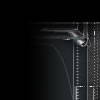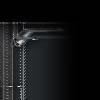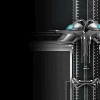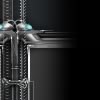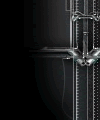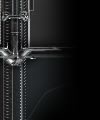combat explanation:
Don’t Just Stand There... Defend Yourself!
In the world of Fallen Earth, it’s all too easy to find
yourself caught up in armed conflict, so it’s essential to be prepared.
The game uses FPS combat that is backed up with RPG mechanics, which
means that it combines a shooter-style aiming reticle with attacker and
defender statistics in order to determine the results of combat. At its
core, the combat system has three important elements: the reticle, hit
calculation, and damage calculation.
The Reticle
When you’re in Aim Mode, you’ll see a set of crosshairs at the
center of the screen. That’s your targeting reticle, which is basically
the sight you’ll use to aim every weapon in the game. To enter Aim
Mode, hit the F2 key or click the middle mouse button. Reticle size
matters—the smaller the reticle, the more accurate your attack will be.
Remember, there is no aiming help here—no sticky targeting, no
auto-aim—nothing but you, your weapon, and your target.
Hit Calculation
Once you have a target in your sights and you pull the trigger or
swing your club, then the math and dice rolls begin. When you click
your mouse, the system picks a random point inside your reticle for the
attack. The higher your skill with the weapon and the slower you move,
the tighter your grouping will be, making your attacks more accurate.
The system checks the selected point to see if there’s a target there.
If so, you score a hit. Otherwise, it’s Maggie’s Drawers—a swing and a
miss.
Damage Calculation
If you hit, then the system compares your skill to the appropriate
skill on the target: Dodge for a Pistol or Rifle attack, or Melee
Defense for a melee-style attack. The defender’s skill can raise or
lower damage amount and provides the chance for a critical hit. After
that, the target’s armor, special abilities, mutations, and usable
items come into play, which potentially mitigates the amount of damage
done. Damage is also affected by where you hit the target. A shot to
the head does more damage than a hit to the leg.
Weapons
There are three fundamental weapon classes in Fallen Earth,
each with its own quirks. A rifle is a handy weapon to have in the
desert. On an open plain where you can see for miles in any direction,
the 100-meter range of the best rifles gives sharpshooters a distinct
advantage. Characters armed with melee weapons or pistols will have to
find a way to close the distance by using the terrain. On the other
hand, the speed and devastating damage of a melee weapon gives brawlers
the upper hand in close-quarters, urban environments, and in forests
where the line-of-sight is limited. A character specialized with the
rifle in this kind of situation will need to rely on special attacks or
switch to another weapon. Pistols are a jack-of-all-trades that can be
used both close-in and at range, but they aren’t as powerful as their
specialized counterparts.
Special Abilities
All characters have a selection of special abilities that augment
the basic FPS combat system. For instance, a character with a
sufficiently high Pistol Skill can learn the Pistol Whip special
ability to knock down an enemy during a close-quarters fight. Rifle
experts have a similar ability, called Rifle Smash. Special attacks can
increase damage, introduce status effects (like knockdown and stun), or
even debuff an opponent’s abilities. Defensive special abilities like
Armor Maintenance and Second Wind can boost your armor rating
temporarily and increase your Stamina, respectively.
Hit Points and Healing
All characters finish the tutorial at level 2. Characters gain 5 hit
points each time they level up, but this can be improved by as much as
half if a character maxes out his or her Strength and Endurance
attributes.
Players can heal one another and themselves in several ways. They
can use First Aid Skills, like Stanch Wound and Heal Poison, to restore
hit points and remove deleterious effects. These special abilities
consume a quantity of stamina each time they’re used. Characters can
also use medical items created by crafters in a similar fashion.
Finally, Healing Mutations can relieve wounds and damaging effects,
though using mutations costs the healer Gamma (and sometimes hit
points) for the effort. Healing effects are stackable, so healers are
free to combine any of these methods in order to keep a teammate (or
themselves) alive.
Death
When a character’s hit points are reduced to zero, he or she is
incapacitated for up to five minutes. During this time, a teammate may
resuscitate him or her with an appropriate mutation ability or medical
item; otherwise, he or she will automatically resurrect in the nearest
LifeNet pod at the end of the wait. Of course, a quick trip to the
LifeNet pod is available for anyone who doesn’t want to wait out the
full five minutes.
When a character resurrects, he or she suffers penalties to either
their XP or stats. The more often a character dies in a short span of
time, the greater these penalties become. In no case does a dead
character leave a lootable corpse behind, so there’s no stealing a
player’s gear, mount, or vehicle.
It sounds like it might be worth taking a look at. There is aiming - no auto lock on, hit boxes such as more damage to head then arm, and rpg elements that help increase your aim, damage, and defense. Plus it looks like a cruel world.
